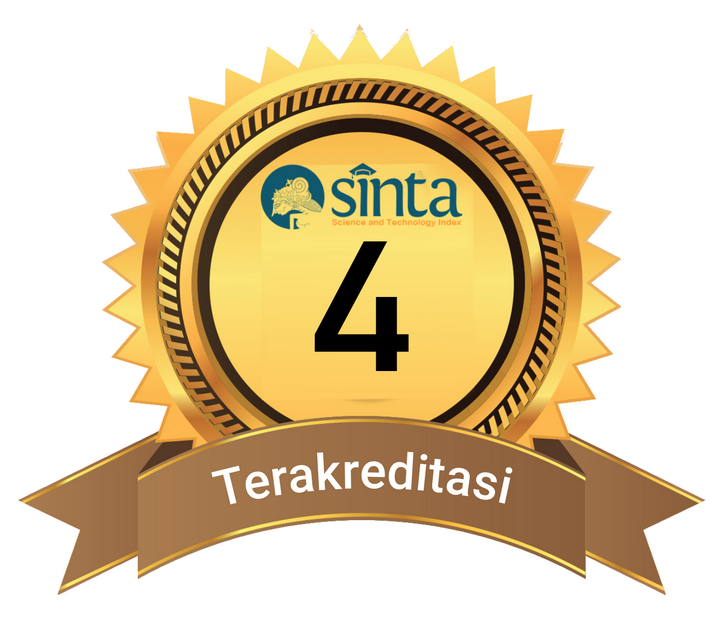Effect of Gypsum Waste Stabilization in Clay Soil on California Bearing Ratio Value
DOI:
https://doi.org/10.30736/cvl.v9i2.1227Keywords:
California Bearing Ratio, Gypsum Powder, Soil Stabilization, Clay SoilAbstract
The problem that occurs in road construction is the low CBR value of the subgrade. Advances in stabilization technology for soil improvement by mixing clay with a mixture of gypsum powder which has elements of the compound Calcium Oxide (Cao), Potassium (Ca), Water (H₂O), Hydrogen (H), and Sulfur (S), so it is necessary to conduct further research and testing in the laboratory with the aim of obtaining the California bearing ratio value on variations in gypsum powder mixing. The research method used is an experimental method in the laboratory with reference to the 2018 Bina Marga General Specifications. With mixing variations of 5%, 10%, 15% and 20% gypsum waste. The soil used in this research was taken from Jalan Badak area, Sail, Tenayan Raya sub-district, Pekanbaru City, Riau which was then tested in the laboratory by testing the specific gravity, soil density and california bearing ratio. The results of laboratory testing, it can be concluded that the addition of 5%, 10%, 15% and 20% gypsum has increased the CBR value, namely with a CBR value of 1.70% to 12.50%. The CBR value has met the Binamarga specification, 2018 which is 6%. So from the results of the equation obtained, it shows a positive relationship, namely the optimum moisture content (OMC) value increases with the increase in the California Bearing Ratio (CBR) value.
Downloads
References
M. Anggraini and A. Saleh, “Penambahan Abu Tandan Kelapa Sawit dan Semen Terhadap Nilai CBR (California Bearing Ratio) Pada Tanah Lempung,” Siklus, vol. 6, no. 1, pp. 49–55, 2020.
A. Muthia and S. Alfian, “Compressive Strength Value of Clay Soil Stabilization With Palm Oil Fuel and Cement,” in The 5th International Seminar on Sustainable Urban Development, 2021, vol. 737, no. 1, doi: 10.1088/1755-1315/737/1/012038.
Y. Maryati, Apriyanti, “Analisis Perbandingan Penggunaan Limbah Gypsum Dengan Semen Sebagai Bahan Stabilization Tanah Lempung,” FROPIL (Forum Prof. Tek. Sipil), vol. 4, no. 1, pp. 49–64, 2016, [Online]. Available: https://journal.ubb.ac.id/index.php/fropil/article/view/1240.
Y. Abdolvand and M. Sadeghiamirshahidi, “Soil stabilization with gypsum: A review,” J. Rock Mech. Geotech. Eng., 2024, doi: 10.1016/j.jrmge.2024.02.007.
E. Elendra and A. Prihatiningsih, “Analisis Tanah Ekspansif Dengan Perbaikan Semen Putih Dan Semen Hitam Menggunakan UCT,” JMTS J. Mitra Tek. Sipil, vol. 2, no. 3, p. 53, 2019.
P. Rai, H. Pei, F. Meng, and M. Ahmad, “Utilization of Marble Powder and Magnesium Phosphate Cement for Improving the Engineering Characteristics of Soil,” Int. J. Geosynth. Gr. Eng., vol. 6, no. 2, pp. 1–13, 2020, doi: 10.1007/s40891-020-00212-3.
D. Panguriseng, “Dasar-Dasar Teknik Perbaikan Tanah,” Pustaka AQ, no. Agustus, p. 240, 2017.
Direktorat Jenderal Bina Marga, “Spesifikasi Umum Bina Marga 2018 Untuk Pekerjaan Konstruksi Jalan dan Jembatan (Revisi 2),” in Kementerian Pekerjaan Umum dan Perumahan Rakyat, no. Oktober, 2020, p. 1036.
F. N. Landangkasiang, O. B. A. Sompie, and J. E. R. Sumampouw, “Analisis Geoteknik Tanah Lempung Terhadap Penambahan Limbah Gypsum,” J. Sipil Statik, vol. 8, no. 2, pp. 197–204, 2020.
I. Indrayani, A. Herius, D. Saputra, and A. M. Fadi, “Analysis of The Effect Of The Addition of Fly Ash and Petrsoil on The Soil Shear Strength of The Swamp Area,” Indones. J. Environ. Manag. Sustain., vol. 4, no. 1, pp. 10–13, 2020, doi: 10.26554/ijems.2020.4.1.10-13.
M. Rezaul Karim, M. F. M. Zain, M. Jamil, and M. Nazrul Islam, “Strength of concrete as Influenced by Palm Oil Fuel Ash,” Aust. J. Basic Appl. Sci., vol. 5, no. 5, pp. 990–997, 2011.
I. Iswandaru, R. N. R, and E. A. K, “Effect Of Gypsum (CaSO4) On Soil Using California Bearing Ratio Test,” ETHOS J. Penelit. dan Pengabdi. Kpd. Masy., vol. 11, no. 1, pp. 45–54, 2023, doi: 10.29313/ethos.v11i1.10180.
R. H. Siregar, A. Setyowati, S. Gunarti, and S. Nuryati, “Limbah Gypsum Lis Plafon Sebagai Bahan Stabilisasi Tanah lempung,” J. Unisma Bekasi, pp. 253–260, 2015.
R. Dewi, Y. Sutejo, R. Rahmadini, M. Arfan, and R. K. Rustam, “Pengaruh Limbah Plafon Gipsum Terhadap Penurunan Konsolidasi Pada Tanah Lempung Ekspansif,” Cantilever, vol. 8, no. 1, p. 1, 2019, doi: 10.35139/cantilever.v8i1.78.
I. R. Kusuma, E. Mina, and N. Fakhri, “Stabilisasi Tanah Lempung Lunak Dengan Memanfaatkan Limbah Gypsum Dan Pengaruhnya Terhadap Nilai California Bearing Ratio ( CBR ),” J. Fondasi, vol. 7, no. 1, pp. 22–31, 2019.
D. Kuttah and K. Sato, “Review on the Effect of Gypsum Content on Soil Behavior,” Transp. Geotech., vol. 4, pp. 28–37, 2015, doi: 10.1016/j.trgeo.2015.06.003.
- Renaningsih, D. Adhistia, Q. Wiqoyah, and A. Susanto, “Stabilisasi Tanah Lempung Ekspansif di Ngawi Jawa Timur Menggunakan Serbuk Gypsum,” Bull. Civ. Eng., vol. 3, no. 1, pp. 17–24, 2023, doi: 10.18196/bce.v3i1.17490.
H. S. Al-Alawi, A. A. Ganiyu, and A. Badr, “Stabilisation of Sohar’s Sabkha soil using waste gypsum plasterboard,” in IOP Conference Series: Materials Science and Engineering, 2020, vol. 849, no. 1, doi: 10.1088/1757-899X/849/1/012028.
H. Purwanto, A. Setiobudi, and R. K. Rustam, “Stabilization of Soft Clay Soil Using a Gypsum Plafond Waste Based on CBR Testing,” Int. J. Sci. Technol. Res., vol. 9, no. 2, pp. 963–968, 2020.
H. Halim, Nursamiah, A. Fattah, and Z. Saing, “The Effect of Gypsum Treated Clay As a Road Subgrade Material,” Int. J. GEOMATE, vol. 23, no. 96, pp. 137–144, 2022, doi: 10.21660/2022.96.3409.
Y. Apriyanti, F. Fahriani, and H. Fauzan, “Use of Gypsum Waste and Tin Tailings as Stabilization Materials for Clay to Improve Quality of Subgrade,” in IOP Conference Series: Earth and Environmental Science, 2019, vol. 353, no. 1, doi: 10.1088/1755-1315/353/1/012042.
Badan SNI 8460:2017, “Persyaratan Perancangan Geoteknik,” in Standar Nasional Indonesia, vol. 8460, Jkaarta: BSN, 2017, pp. 1–323.
BSN, “Cara Uji Berat Jenis Tanah,” in Sni 1964:2008, 2008, pp. 1–14.
BSN, “Cara Uji Penentuan Kadar Air untuk Tanah dan Batuan di Laboratorium,” in Sni 1965:2008, 2008, pp. 1–16.
SNI 3423:2008, “Cara Uji Analisis Ukuran Butir Tanah,” in Sni 3423:2000808, 2008, pp. 1–27.
BSN, “Cara Uji Penentuan Batas Cair Tanah,” in Sni 1967:2008, 2008, p. 25.
Badan Standardisasi Nasional, “SNi 1742:2008 Cara uji kepadatan ringan untuk tanah,” in Badan Standarisasi Nasional, Jakarta, 2008, pp. 1–20.
1744 : SNI, “Metode uji CBR laboratorium,” pp. 1–28, 2012.
H. C. Hardiyatmo, Mekanika Tanah 1, Edisi-5. Yogyakarta: Gadjah Mada University Press, 2010.
Fathurrozi and F. Rezqi, “Sifat-sifat fisis dan Mekanis Tanah Timbunan Badan Jalan Kuala Kapuas,” J. Poros Tek., vol. 8, no. 1, pp. 1–54, 2016.
M. Anggraini, V. T. Haris, and A. Saleh, “Karakteristik Tanah Timbun Sebagai Pengganti Subgrade,” JICE, vol. 3, no. 2, pp. 100–103, 2023.
Downloads
Published
How to Cite
Issue
Section
License
Copyright (c) 2024 Muthia Anggraini, Yustinus Sitorus, Widya Apriani

This work is licensed under a Creative Commons Attribution-ShareAlike 4.0 International License.
Authors who publish in this journal agree to the following terms:
-
- Copyright on any article is held by the author.
- The author grants the journal first publication rights with the work licensed concurrently under a Creative Commons Attribution License that allows others to share the work with an acknowledgment of authorship and initial publication of the work in this journal.
- Authors may make separate, additional contractual arrangements for the non-exclusive distribution of the journal's published version of that journal (for example, posting it to an institutional repository or publishing it in a book), with an acknowledgment of its initial publication in this journal.
- Authors are permitted and encouraged to post their work online (for example, in an institutional repository or on their website) before and during the submission process, as doing so can lead to productive exchange, as well as earlier and greater citation of the published work.
- Published articles and related materials distributed under a Creative Commons Attribution-ShareAlike 4.0 International License
Civilla (Jurnal Teknik Sipil Universitas Islam Lamongan) by Universitas Islam Lamongan is licensed under a Creative Commons Attribution-ShareAlike 4.0 International License.
Based on a work at https://jurnalteknik.unisla.ac.id/index.php/CVL/index








